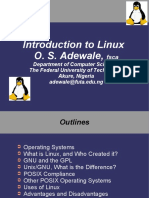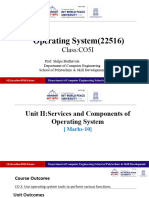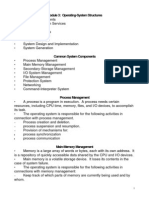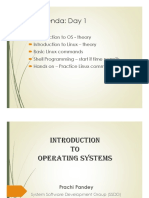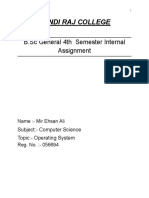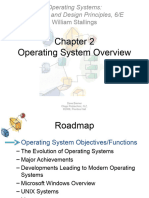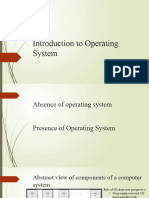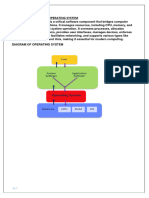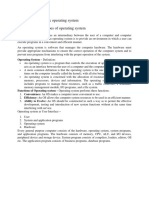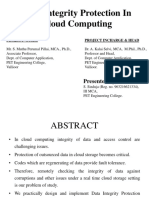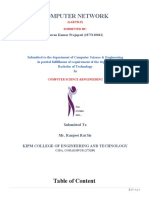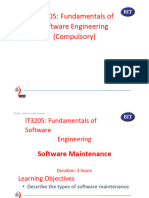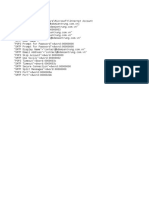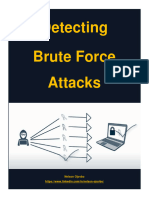0% found this document useful (0 votes)
8 views19 pagesWk1b Linux Operating System
The document provides an overview of the history, architecture, and functionalities of the UNIX and Linux operating systems. It outlines the evolution of operating systems from the 1940s to the present, highlighting key features of UNIX/Linux such as multiuser capabilities, process management, and security management. Additionally, it discusses various distributions of UNIX and Linux, emphasizing their applications in networked environments.
Uploaded by
nicolecanoy24Copyright
© © All Rights Reserved
We take content rights seriously. If you suspect this is your content, claim it here.
Available Formats
Download as PDF, TXT or read online on Scribd
0% found this document useful (0 votes)
8 views19 pagesWk1b Linux Operating System
The document provides an overview of the history, architecture, and functionalities of the UNIX and Linux operating systems. It outlines the evolution of operating systems from the 1940s to the present, highlighting key features of UNIX/Linux such as multiuser capabilities, process management, and security management. Additionally, it discusses various distributions of UNIX and Linux, emphasizing their applications in networked environments.
Uploaded by
nicolecanoy24Copyright
© © All Rights Reserved
We take content rights seriously. If you suspect this is your content, claim it here.
Available Formats
Download as PDF, TXT or read online on Scribd
/ 19
